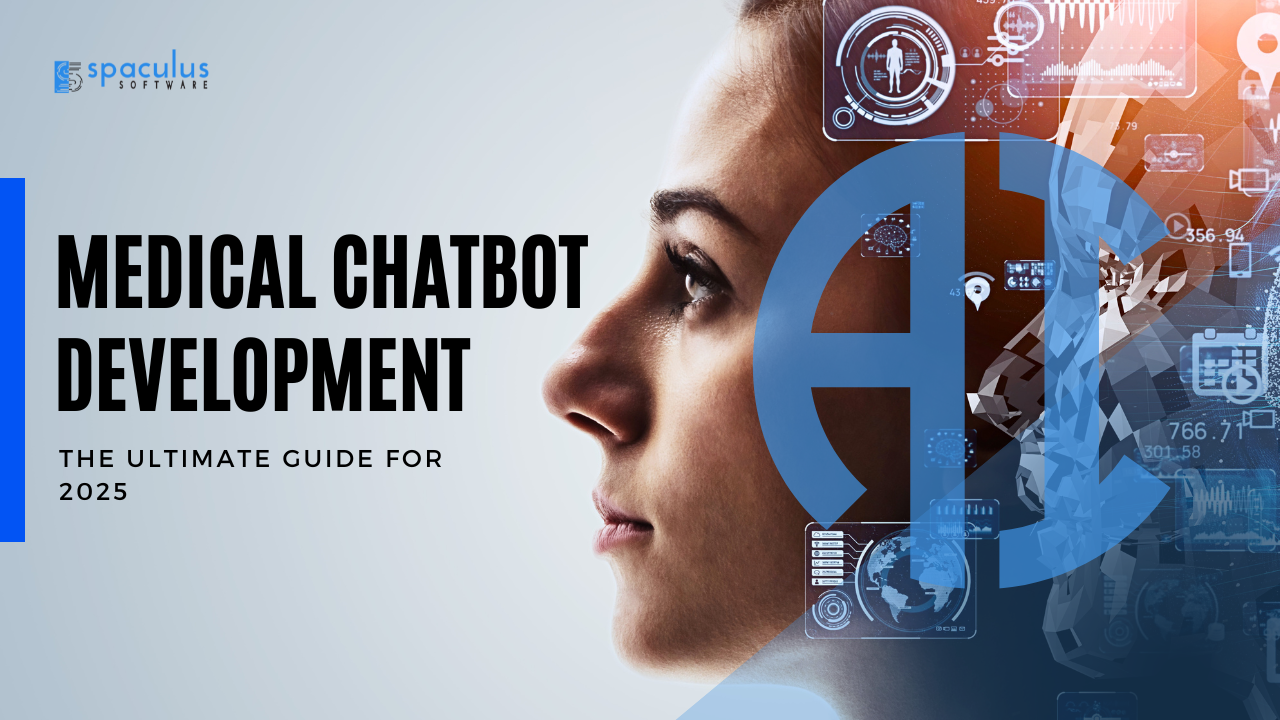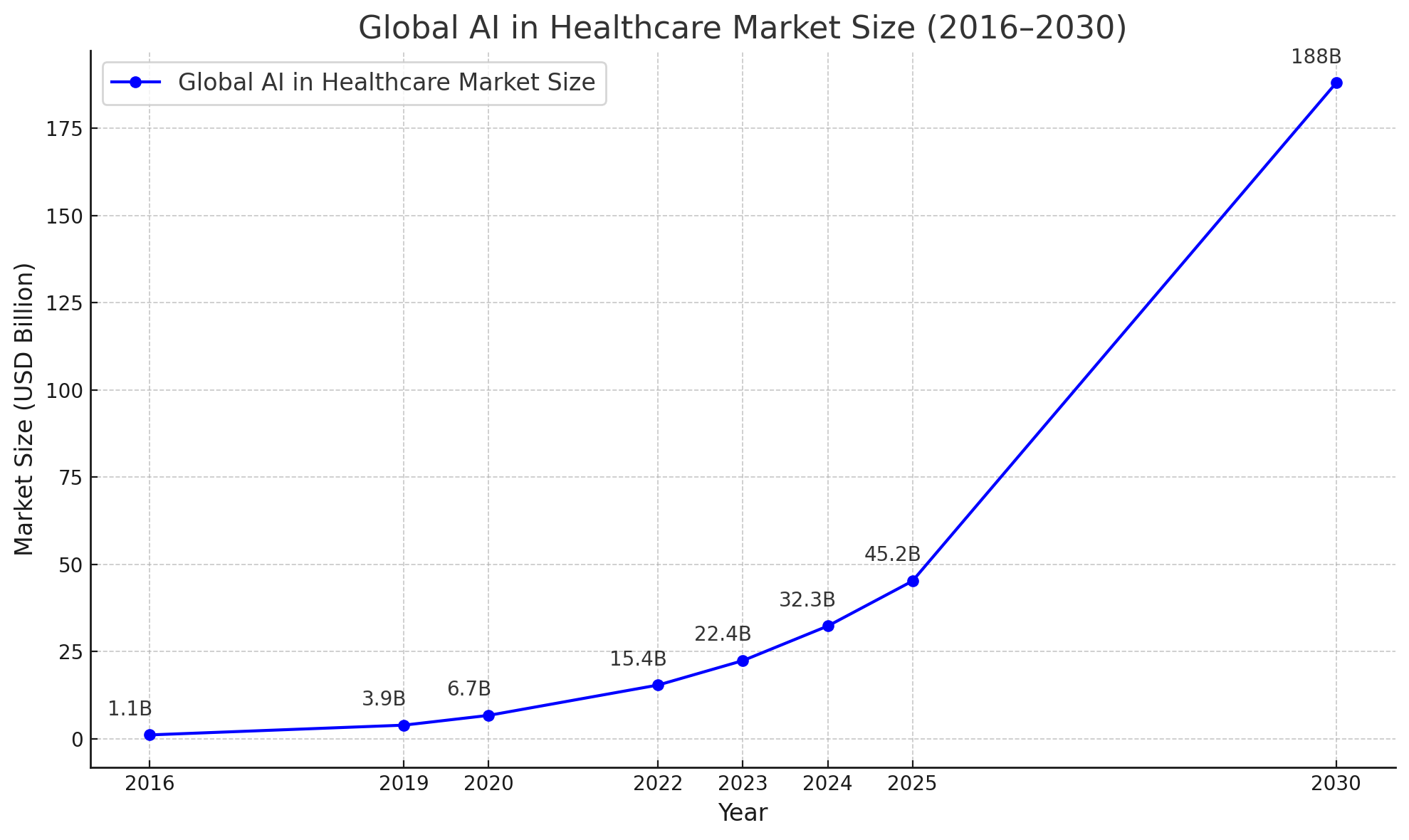
Imagine having a friendly assistant available 24/7 to help answer health questions, book doctor appointments, or remind you to take your medicine. This assistant doesn’t get tired, works around the clock, and knows how to handle a lot of basic healthcare tasks. That’s what medical chatbots are all about—making healthcare easier and faster for everyone.
Let’s dive into how these chatbots are built, why they’re important, and what’s next for them in 2025.
Medical chatbots are computer programs designed to have conversations with people about health-related issues. They can answer questions like “What are the symptoms of a fever?” or help you schedule a doctor’s visit. Chatbots use technology to understand what you’re saying and give you the right answers, just like talking to a real person.

Informative chatbots provide general health information. They answer frequently asked questions, offer tips, and guide users to reliable resources. These chatbots act like your first stop for basic health advice.
| User Input | Chatbot Response |
| What are the symptoms of flu? | Common flu symptoms include fever, cough, sore throat, and fatigue. |
| How can I stay healthy? | Drink plenty of water, eat balanced meals, exercise regularly, and get enough sleep |
| Where can I find a nearby clinic? | Here are some nearby clinics: 1. City Health Clinic (1 mile away), 2. Wellness Center (2.5 miles away). |
A person planning to travel during flu season might ask the chatbot about symptoms and prevention tips. The chatbot provides detailed, easy-to-understand answers, saving the user from scrolling through multiple websites.
Conversational chatbots engage users in interactive dialogues to assess their symptoms and provide personalized recommendations. They mimic a conversation with a healthcare professional.
| User Input | Chatbot Response |
| I have a headache and a fever. | I’m sorry to hear that. Do you also feel fatigued or have a sore throat? |
| Yes, I feel tired and my throat hurts. | These symptoms may suggest the flu. It’s best to rest, stay hydrated, and consult a doctor if symptoms worsen. |
| Should I take any medication? | I recommend consulting a healthcare provider for proper medication. Would you like me to book an appointment? |
A user experiencing mild symptoms at night might not have access to a doctor immediately. The chatbot provides guidance, helping the user decide if self-care is enough or if medical attention is necessary.
Prescriptive chatbots take things a step further by offering advice tailored to the user’s medical history or specific needs. These chatbots often integrate with electronic health records (EHRs) to deliver highly personalized suggestions.
| User Input | Chatbot Response |
| I need to manage my diabetes better. | Based on your health records, here are some tips: 1. Monitor blood sugar levels daily, 2. Eat low-carb meals. |
| What’s my current medication schedule? | You’re scheduled to take Metformin at 8 AM and 8 PM. Don’t forget to drink water with your medication |
| I missed my evening dose. What should I do? | Please take it now if it’s within 2 hours of your scheduled time. Otherwise, skip it and continue as normal. |
A patient managing chronic conditions like diabetes can rely on a chatbot for reminders, guidance, and answers to medication-related questions. This ensures better adherence to treatment plans.
Medical chatbots address some of the most persistent challenges in healthcare. Let’s delve into their impact in terms of speed, efficiency, and cost savings, illustrating how they transform healthcare delivery.

→ Fast Help
Patients often face long waits for medical advice, especially during peak hours or emergencies. Medical chatbots eliminate delays by providing instant responses to common health concerns. This speed ensures that patients get the help they need, right when they need it.
For Example, during the COVID-19 pandemic, healthcare systems used chatbots to handle an overwhelming number of queries. These bots provided immediate guidance on symptoms, vaccination information, and testing centers. According to a McKinsey report, chatbots reduced call center wait times by up to 70%, easing the burden on overwhelmed healthcare staff.
Patients value quick resolutions, especially when dealing with minor but urgent concerns. By offering immediate assistance, chatbots improve patient satisfaction and prevent unnecessary delays that could escalate health issues.
→ Saving Time
Repetitive administrative tasks consume significant time for healthcare professionals. Tasks like scheduling appointments, sending reminders, and answering FAQs often pull staff away from patient care. Chatbots automate these processes, ensuring tasks are completed efficiently without human intervention.
For example, a hospital using chatbots to manage appointment bookings reported saving 30 hours per week on administrative tasks. These savings allow doctors and nurses to dedicate more time to treating patients and addressing complex medical cases.
By reducing manual workload, chatbots not only enhance operational efficiency but also improve staff morale. Medical professionals can focus on high-value tasks, knowing routine activities are handled seamlessly.
→ Lower Costs
Healthcare providers face constant pressure to manage costs while maintaining quality care. Chatbots offer a cost-effective solution by reducing the need for additional staff to handle repetitive tasks. They also minimize operational expenses associated with traditional call centers and in-person consultations.
A Deloitte study highlighted that implementing AI-driven chatbots can cut operational costs by 20–30% annually for healthcare organizations. With maintenance costs as low as $500–$1,000 per month, chatbots deliver substantial ROI by replacing or complementing human interactions for routine inquiries.
Moreover, these savings can be reinvested into advanced medical equipment, training, and improved patient care services, creating a more sustainable healthcare model.

Medical chatbots use a mix of smart technologies to understand and respond to users:
Building a medical chatbot involves structured steps to ensure it effectively serves patients and healthcare providers.
Start by identifying what you want your chatbot to achieve. Is it meant to answer basic health questions, assist in booking appointments, or help manage medications? Knowing the goal keeps the development process focused.
For example, a hospital might want a chatbot to handle appointment scheduling and send reminders. In this case, the chatbot’s primary function would be managing patient schedules while integrating with the hospital’s existing systems.
Key Questions to Answer:

Conversations are at the heart of any chatbot. The chatbot must be able to guide users smoothly from their question to the correct answer.
For example, imagine a patient asks the chatbot, “What are the symptoms of a cold?” Here’s how the conversation might flow:
| User Input | Chabot Response |
| What are the symptoms of a cold? | Common symptoms include sneezing, runny nose, sore throat, and mild fever. Would you like tips to manage these symptoms? |
| Yes, please. | You can rest, stay hydrated, and use over-the-counter medication. Should I book an appointment with a doctor for you? |
Tips for Designing Conversations:
Technology is the backbone of your chatbot. You’ll need tools like:
For example , If the chatbot needs to access patient appointment data, it should integrate with the hospital’s scheduling software. A platform like Dialogflow can handle NLP, while APIs can link the chatbot to other systems.
Things to Consider:
Testing ensures the chatbot works as intended. Begin by simulating real-life scenarios to check how the chatbot responds.
Example:
If a user asks, “What should I do for a sprained ankle?” the chatbot should provide accurate advice, like elevating the foot, applying ice, and avoiding weight on it. Test variations of this question to ensure the chatbot understands and responds correctly.
Testing Checklist:
Ask real users, like patients or staff, to interact with the chatbot and provide feedback. Adjust the chatbot based on their suggestions.

1. Privacy Concerns
Medical chatbots handle sensitive personal and health-related data. Protecting this information is crucial to comply with privacy laws like HIPAA and GDPR. A breach in security could lead to misuse of confidential data, damaging trust and reputation.
How It’s Addressed:
For instance, a chatbot that collects symptoms for a diagnosis must ensure the data cannot be accessed or used by unauthorized parties.
2. Accuracy of Responses
A chatbot providing incorrect medical advice could cause harm, delay proper treatment, or lead to distrust. Ensuring chatbots are accurate requires robust training using reliable medical databases and guidelines.
How It’s Addressed:
Example: A chatbot must know the difference between symptoms of a cold and the flu, offering the right advice for each condition.
While medical chatbots have the potential to transform healthcare, they come with challenges that must be addressed to ensure their effectiveness and reliability.
1. Privacy Concerns
Medical chatbots handle sensitive personal and health-related data. Protecting this information is crucial to comply with privacy laws like HIPAA and GDPR. A breach in security could lead to misuse of confidential data, damaging trust and reputation.
How It’s Addressed:
For instance, a chatbot that collects symptoms for a diagnosis must ensure the data cannot be accessed or used by unauthorized parties.
2. Accuracy of Responses
A chatbot providing incorrect medical advice could cause harm, delay proper treatment, or lead to distrust. Ensuring chatbots are accurate requires robust training using reliable medical databases and guidelines.
How It’s Addressed:
Example: A chatbot must know the difference between symptoms of a cold and the flu, offering the right advice for each condition.
3. Gaining User Trust
People may hesitate to trust chatbots with their health concerns. Building trust takes time and requires chatbots to demonstrate reliability, empathy, and consistent performance.
How It’s Addressed:
For example, if a chatbot answers with empathy (“I’m sorry to hear you’re feeling unwell”), it helps users feel more comfortable and supported.
The future of medical chatbots holds immense potential. With advancements in technology, these bots are set to become more intelligent, personalized, and accessible. Let’s break it down into practical scenarios in a table format:
| Future Development | How It Works | Practical Example |
| Integration with Wearables | Chatbots connect with devices like smartwatches to gather real-time health data such as heart rate, steps, or sleep patterns. | A smartwatch detects irregular heartbeats and alerts the chatbot, which suggests visiting a cardiologist. |
| Smarter AI | Using advanced AI, chatbots analyze complex medical queries and provide more accurate and context-aware responses. | A chatbot identifies patterns in symptoms shared by multiple users, suggesting the possibility of a localized outbreak. |
| Global Reach | Multi-language support allows chatbots to interact with users worldwide, breaking language barriers in healthcare. | A patient in Spain communicates with a chatbot in Spanish to schedule a doctor’s appointment in the U.S. |
At Spaculus Software, we specialize in creating cutting-edge medical chatbot solutions tailored to meet the unique needs of healthcare providers. Our chatbots streamline patient interactions, enhance operational efficiency, and ensure compliance with the highest industry standards.
Whether you’re looking to integrate AI into your healthcare services or develop a custom chatbot that transforms the patient experience, Spaculus Software is here to help.
Why Choose Us?
Empower your healthcare practice with intelligent chatbots that save time, reduce costs, and improve patient satisfaction.
Contact us today to explore how we can elevate your services with AI-driven solutions.
Medical chatbots are no longer a futuristic concept—they are now a practical solution addressing many of healthcare’s critical challenges. These AI-driven assistants provide rapid support, automate routine tasks, and reduce costs, making them an indispensable tool for modern healthcare providers.
From responding to patient queries in real time to managing chronic conditions, chatbots are redefining healthcare delivery. Their ability to integrate with wearable devices, provide multilingual support, and deliver accurate medical insights is revolutionizing global healthcare accessibility.
Partnering with an AI chatbot development company ensures the creation of reliable medical chatbots that tackle challenges like data privacy, accuracy, and building user trust. With the right expertise and cutting-edge technology, these obstacles can be addressed, enabling smarter, more efficient, and accessible healthcare systems for everyone.
AI Chatbot Development